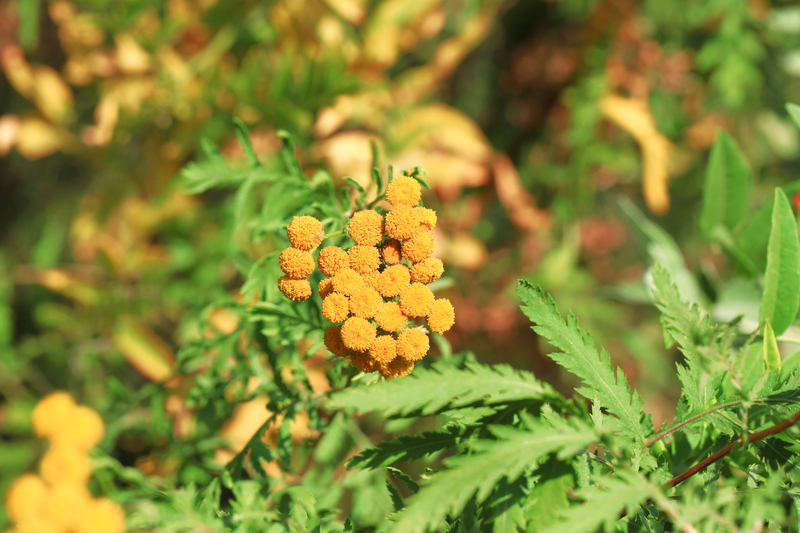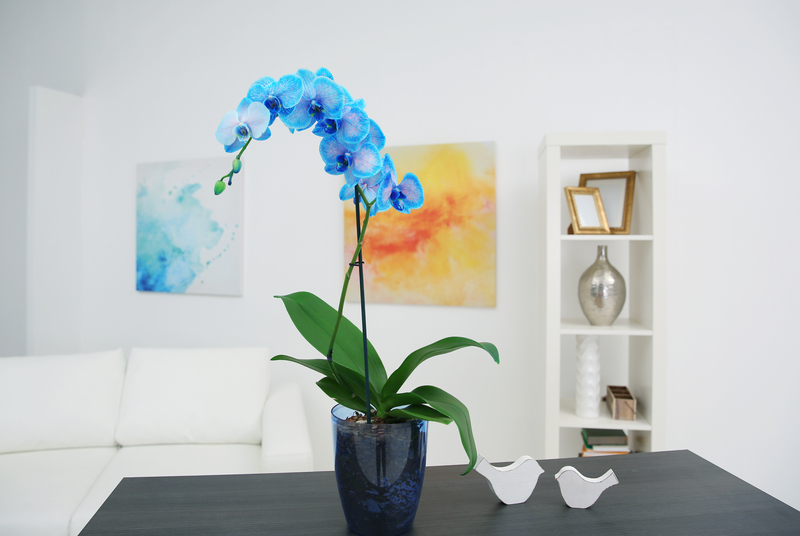Creating a Thriving Backyard for Little Nature Lovers
Posted on 17/06/2025
Creating a Thriving Backyard for Little Nature Lovers
Are you longing to create a thriving backyard for little nature lovers? Whether you're a parent, grandparent, educator, or nature enthusiast, inspiring children to discover the wonders of the natural world begins right at home. This comprehensive guide will show you how to transform your backyard into a safe, fun-filled oasis for young explorers. Explore practical tips, creative ideas, and step-by-step strategies to nurture inquisitive minds and sustain a habitat bursting with life. Your journey to backyard nature adventures begins here!
Why Cultivating a Nature-Friendly Backyard Matters
Inviting children to spend time in a nature-inspired outdoor space offers countless benefits:
- Physical Health: Moving, running, climbing, and digging improve children's physical development.
- Emotional Wellbeing: Nature reduces stress and encourages mindfulness.
- Cognitive Growth: Curiosity, observation, and discovery stimulate brain growth.
- Environmental Stewardship: Kids learn to love and protect the natural world.
By designing a backyard for little nature enthusiasts, you provide opportunities for exploration, hands-on learning, and a lifelong relationship with wildlife and the earth.

Step 1: Envisioning Your Child-Friendly Nature Backyard
Before you dig in, spend time with your child dreaming up your ideal backyard habitat for young nature lovers. Ask yourselves:
- What native wildlife do you hope to attract (butterflies, bees, birds, frogs)?
- How will children interact with each part of the garden?
- Are there elements for imaginative play and quiet observation?
- What spaces will be safe for digging, climbing, or creating?
- Can you include edible plants as well as purely ornamental ones?
Step 2: Selecting and Arranging Native Plants
Why Native Plants Are Key
Native plants are the cornerstone of flourishing backyard habitats, providing food, shelter, and nesting sites for local wildlife. They are also low-maintenance, water-wise, and safe for kids since they don't require chemical pesticides or fertilizers.
Kid-Friendly Plant Choices
- Milkweed (supports monarch butterflies)
- Sunflowers (fun to grow, attracts birds & pollinators)
- Black-eyed Susans (bright and rugged)
- Bee Balm (hummingbirds love it)
- Herbs like mint, chives, and basil (edible, fragrant, bee-friendly)
- Native grasses and ferns (great for texture and hiding insects or frogs)
Be sure to research what plants are suited for your climate zone! Involve children in the planting process--it builds ownership and a sense of responsibility for their garden.
Step 3: Provide Wildlife Habitats
Homes for Birds, Bees, and Beyond
To encourage biodiversity, your backyard should include elements designed to attract a range of creatures. Consider:
- Birdhouses and nesting shelves for feathered friends.
- Bee hotels and logs with holes for solitary bees.
- Brush piles or rock stacks for hiding amphibians and insects.
- Butterfly puddling stones and nectar sources.
- Toad houses (upturned clay pots or small caves in shady spots).
Step 4: Add Water Features for Wonder and Wildlife
Water is irresistible to children and essential to many forms of wildlife. Depending on your space and budget, you might include:
- Birdbaths (keep shallow and clean for safety).
- Splash ponds with gradual slopes so critters and kids can enter safely.
- Mini streams using solar pumps, perfect for exploring currents and water bugs.
- Rain gardens for stormwater management and plant diversity.
Step 5: Design for Discovery, Play & Creativity
Nurturing Imagination Outdoors
A successful backyard for little nature lovers mixes wild, unstructured areas with creative play spaces. Some inspiring ideas include:
- Fairy gardens or miniature animal habitats nestled under shrubs.
- Willow tunnels or living "forts" made from fast-growing, flexible trees or bamboo.
- Nature art stations with supplies for leaf rubbings, twig frame crafts, or clay sculpture.
- Mud kitchens or sand pits for open-ended sensory play.
- Observation areas with log stumps or benches for birdwatching or journaling.
Invite your child to customize the space with homemade stepping stones, hand-painted signs, or whimsical decorations. The more involved they are, the more they'll cherish the time they spend outdoors.
Step 6: A Safe and Accessible Environment
Checklist for a Kid-Safe Backyard
Safety is paramount when designing outdoor spaces for children. Stay vigilant about the following:
- Check for toxic plants or berries and remove them from play areas.
- Secure water features and supervise young children at all times.
- Use organic mulch and avoid chemical fertilizers or pesticides.
- Maintain clear pathways for easy navigation.
- Fence off hazards (toolshed, compost heap, sharp drops).
- Shade: Provide shade using trees, trellises, or canopies to protect from sunburn.
- Knee-high containers make gardening accessible for all ages and abilities.
Step 7: Encourage Sustainable Gardening Habits
A nature-friendly backyard for children is one that teaches respect for resources. Demonstrate eco-conscious gardening with practices such as:
- Composting kitchen and garden waste (kids love watching decomposition in action!).
- Harvesting rainwater in barrels for irrigation.
- Reusing materials--think repurposed containers, trellises, or art supplies.
- Growing organic vegetables and involving children in every step from seed to plate.
- Leaving parts of the garden "untidy" as safe havens for wildlife.
Sustainability isn't just about ecology; it's also about building habits young gardeners can carry through life. Show how every small action matters!
Step 8: Learning Through Nature--All Year Long
Seasonal Activities for Little Naturalists
Make your backyard nature paradise engaging every month. Some ideas:
- Spring: Plant seeds, observe pollinators, look for frog and butterfly eggs.
- Summer: Harvest vegetables, try nighttime moth counting, make sun prints.
- Autumn: Collect leaves, press flowers, build insect hotels, rake for compost.
- Winter: Feed backyard birds, build brush piles, identify animal tracks in the snow.
Involving the Whole Family or Community
A thriving backyard for little explorers naturally becomes a point of connection. Invite neighbors to create wildlife corridors, swap plants, or join you for nature scavenger hunts. Grandparents or local experts can bring fresh knowledge for children, enhancing their experience and your sense of community.
Common Challenges and Simple Solutions
- Lack of Space? Use vertical gardening, containers, or hanging baskets for wildlife-friendly plants.
- Pest Worries? Attract natural predators like ladybugs or frogs--instead of using chemicals.
- Poor Soil? Build raised beds or try lasagna gardening techniques for quick, healthy results.
- Busy Schedule? Dedicate a few minutes a day; nature rewards even brief, mindful visits.
The Lasting Impact: Cultivating Lifelong Nature Lovers
By creating a thriving backyard for little nature lovers, you're nurturing not just plants and wildlife--but the future stewards of our planet. Research consistently shows that early, joyful exposure to nature builds compassion, curiosity, and resilience. When you walk outside, turn over a log, taste your first homegrown tomato, or discover a butterfly chrysalis together, you're weaving memories and values that endure a lifetime.

Conclusion: Your Wild and Wonderful Backyard Awaits
Ready to start building your backyard haven for young naturalists? Whether you have a sprawling lawn or a sunny balcony, returning a piece of land to nature is a rewarding journey for your family and the environment. Nurture curiosity, create a safe and sustainable landscape, and watch as your children bloom right alongside the plants and animals they cherish. The adventure of outdoor discovery starts with a single step--take it today, and inspire a love of the wild that will last generations.
Quick Tips for Success
- Start small--A single flowerpot or bug hotel is a great first step.
- Stay curious--Let your child's questions guide new projects.
- Share discoveries--Celebrate every "aha!" moment together.
- Take photos--Document growth, visits from wildlife, and creative projects.
Your backyard adventure for little nature lovers awaits--let's grow wild, together!

